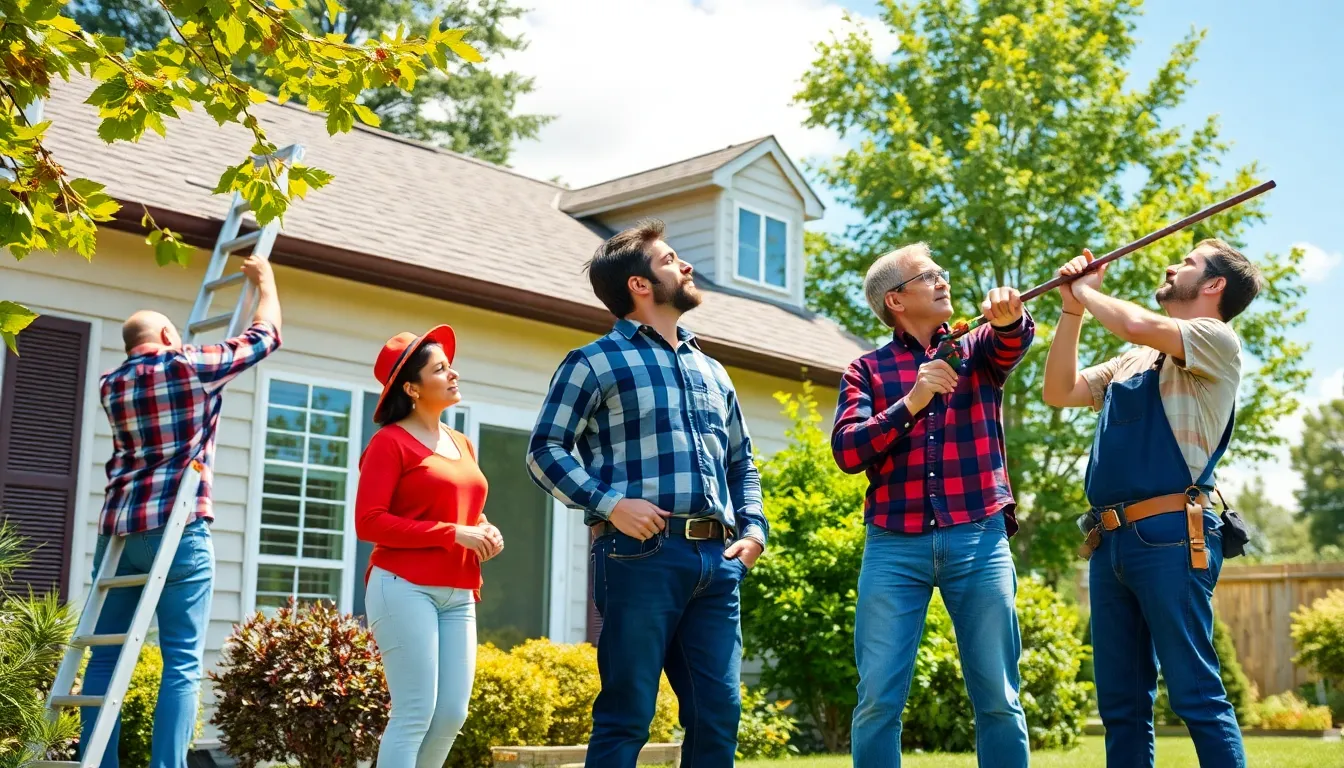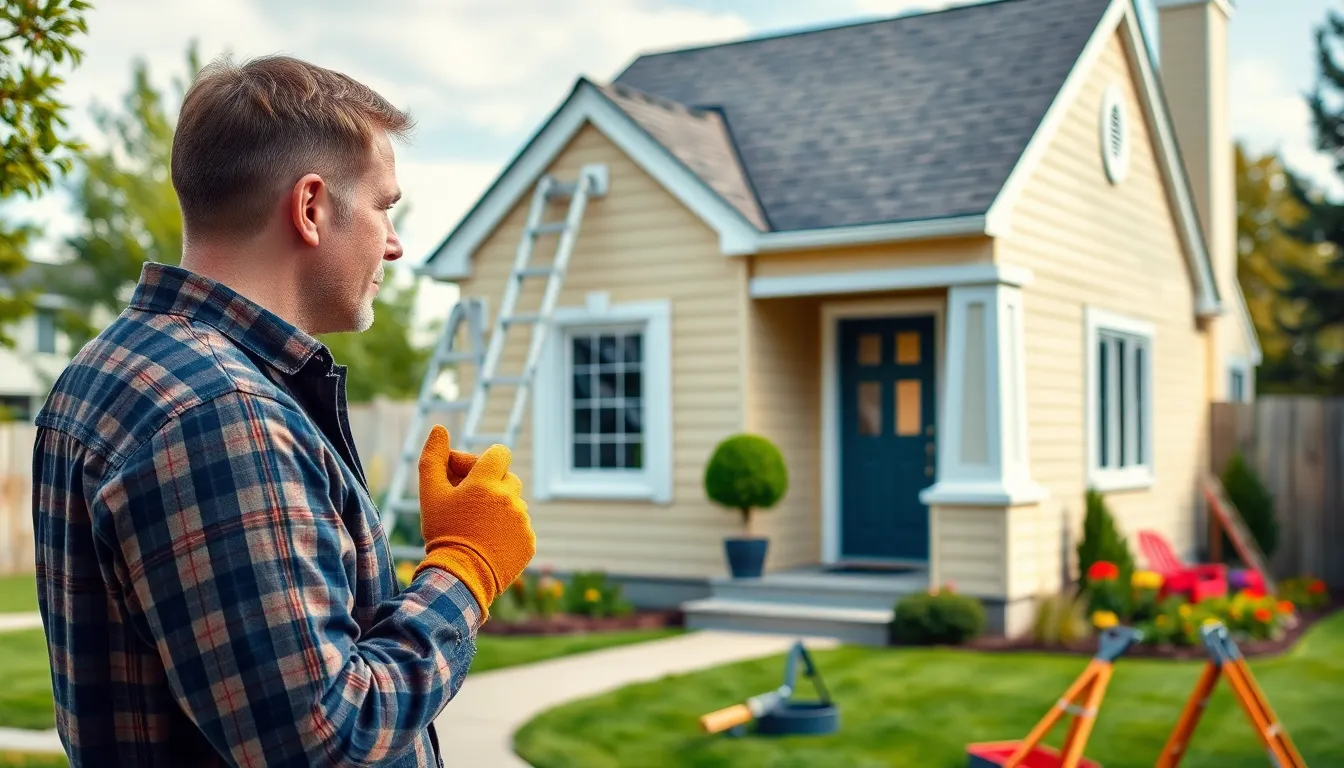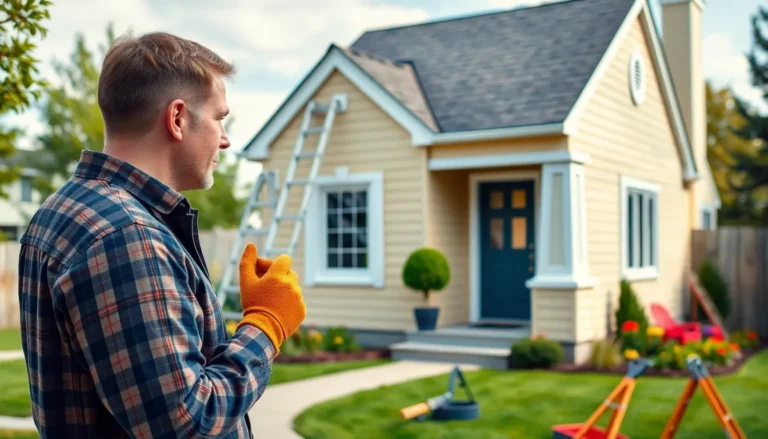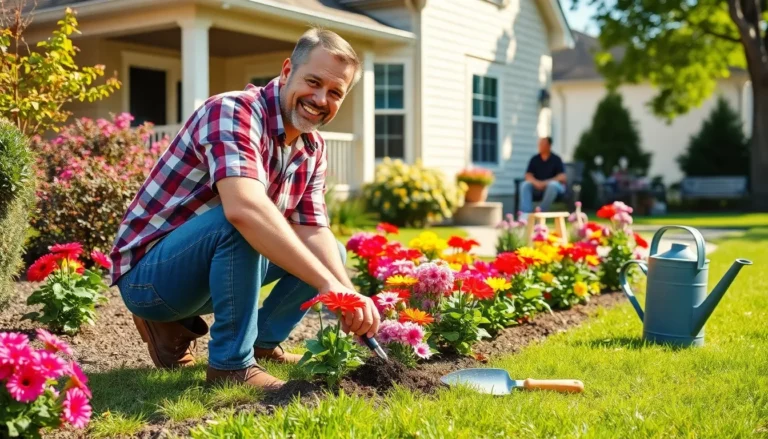Table of Contents
ToggleOwning a home is like having a pet—it’s rewarding but requires constant attention. Just like you wouldn’t ignore your furry friend’s needs, neglecting your home can lead to a host of problems. That’s where a homeowner’s maintenance checklist comes in, acting like a trusty sidekick in your quest for a happy, healthy home.
Importance Of Homeowners Maintenance Checklist
A homeowners maintenance checklist serves as a crucial tool in preserving a property’s value and ensuring safety. Regular maintenance activities help identify issues before they escalate into costly repairs. An organized approach encourages homeowners to focus on essential tasks, fostering a proactive mindset.
Safety concerns often arise from neglected maintenance. Regular inspections of roofs, plumbing, and electrical systems minimize the risk of accidents or structural failures, ensuring a secure living environment. Homeowners can prevent mold growth through timely checks, promoting indoor air quality.
Additionally, a comprehensive checklist assists in budgeting. Knowing what maintenance tasks require attention enables homeowners to allocate resources effectively, avoiding unexpected expenses. Scheduling seasonal tasks, like cleaning gutters or servicing HVAC systems, streamlines the maintenance process.
Homeownership builds equity over time. By maintaining the property, homeowners can enhance curb appeal and overall market value. Attention to detail, such as painting and landscaping, not only improves aesthetics but also attracts potential buyers.
Balancing routine and emergency maintenance is essential. Homeowners benefit from a checklist that incorporates both scheduled tasks and unexpected repairs. Developing this habit ensures they stay ahead of issues, minimizing disruptions to daily life.
Ultimately, a homeowners maintenance checklist is not just a recommendation; it constitutes a vital aspect of responsible property management. Consistent upkeep safeguards investments, enhances livability, and fosters a comfortable home environment.
Seasonal Maintenance Tasks

Seasonal maintenance tasks are essential for protecting a home throughout the year. By following these tasks, homeowners can prevent major issues and ensure a comfortable living environment.
Spring Maintenance
Spring maintenance tasks focus on preparing a home for warmer weather. Inspect the roof for damage after winter storms. Clean gutters to prevent water damage and optimize drainage. Check outdoor furniture for wear and repair as needed. Fertilize the lawn and tend to garden beds for a vibrant landscape. Test smoke detectors and replace batteries if necessary to ensure safety.
Summer Maintenance
Summer maintenance tasks emphasize keeping the home cool and functional. Clean and service air conditioning units for optimal efficiency. Inspect windows for air leaks to enhance energy efficiency. Repair any screens on doors and windows to keep insects outside. Trim trees and shrubs away from the house to prevent pests and promote healthy growth. Check the irrigation system for leaks to ensure efficient watering.
Fall Maintenance
Fall maintenance tasks prepare the home for colder weather ahead. Clean and inspect the chimney to prevent fire hazards. Check the heating system to ensure it functions properly before winter. Drain and store garden hoses to prevent freezing. Store patio furniture to protect it from harsh elements. Seal gaps around windows and doors to improve energy efficiency.
Winter Maintenance
Winter maintenance tasks focus on safeguarding the home during freezing temperatures. Insulate pipes to prevent freezing and bursting. Check the roof for snow buildup to avoid excess weight damage. Regularly clear walkways and driveways from snow and ice to ensure safety. Monitor heating systems for efficiency and address any unusual noises. Keep an eye on indoor humidity levels to prevent mold growth in winter months.
Interior Maintenance
Interior maintenance tasks play a vital role in a home’s functionality and safety. Regular attention to these areas prevents larger issues and promotes a healthy living environment.
Plumbing Checks
Inspecting plumbing systems helps avoid leaks and water damage. Homeowners should examine under sinks and around toilets for any signs of moisture. Flushing toilets regularly ensures they’re functioning correctly and identifies leaks. Cleaning aerators and showerheads maintains water flow and prevents mineral buildup. Additionally, testing sump pumps prepares them for heavy rain, reducing flooding risks in basements.
Electrical System Inspections
Heeding electrical system safety is crucial for preventing hazards. Homeowners must check for frayed wires and replace damaged outlets. It’s recommended to test GFCI outlets monthly to ensure they function properly. Furthermore, examining circuit breakers and fuses keeps systems running efficiently. Regularly updating smoke detectors ensures they work and enhance safety in case of emergencies.
Exterior Maintenance
Exterior maintenance ensures the home’s integrity and enhances its curb appeal. This regular upkeep is vital for long-term property value.
Roof and Gutter Care
Inspecting the roof annually prevents leaks and structural damage. Look for missing shingles, signs of wear, and debris buildup. Cleaning gutters regularly avoids water overflow, preventing potential flooding and foundation issues. Use a sturdy ladder and proper equipment for safety. Homeowners should also check flashing and seals around vents and chimneys. These inspections reduce the risk of costly repairs and prolong roof lifespan.
Landscaping and Exterior Repairs
Landscaping significantly impacts first impressions. Mowing the lawn, pruning shrubs, and maintaining flower beds enhance aesthetics. Additionally, homeowners ought to inspect outdoor lighting and replace any burnt-out bulbs. Power washing driveways and walkways removes dirt and moss, improving safety. Repairing fences, railings, and siding prevents further deterioration and enhances security. Regular maintenance of exterior features contributes to the home’s overall appeal and value.
Additional Tips For Homeowners
Staying organized is vital for effective home maintenance. Homeowners can streamline tasks through simple strategies that ensure nothing is overlooked.
Setting Reminders
Scheduling regular maintenance tasks significantly increases accountability. Utilize digital calendars or reminder apps for setting alerts about inspections and repairs. Monthly notifications for checking smoke detectors or seasonal reminders for HVAC servicing can enhance efficiency. Additionally, creating a recurring schedule helps homeowners to stay on track with their maintenance checklist. This practice minimizes the chances of forgetting essential tasks.
Keeping Records
Maintaining a comprehensive record of repairs, inspections, and upgrades promotes a well-informed homeowner. Each entry—whether for plumbing repairs or appliance installation—provides crucial insights for future maintenance. Homeowners benefit from tracking dates, costs, and service providers. Keeping digital or physical records makes referencing past work easier when selling a home or planning future projects. Such documentation fosters a sense of ownership and responsibility, ultimately leading to better home management.
A homeowner’s maintenance checklist is an invaluable resource for anyone looking to protect their investment and ensure a comfortable living space. By adopting a proactive approach to home care homeowners can prevent minor issues from escalating into costly repairs. Seasonal and interior tasks play a significant role in maintaining both functionality and safety while enhancing curb appeal.
Staying organized with reminders and comprehensive records further empowers homeowners to manage their properties effectively. This commitment to regular maintenance not only safeguards the home but also fosters a sense of pride in ownership. Ultimately a well-maintained home reflects both care and responsibility making it a welcoming sanctuary for all who live there.







